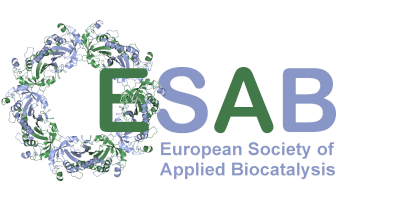Approaching Circularity with Wood and Biomass Residuals
Abstract
I introducethree emblematic cases associated with our recent work that highlight the great possibilities of circularity in the bioeconomy based on forest biomass and residuals. First, I discuss a processing route that transforms low-value wood (residual, damaged, decayed, disposed or fractured) into lightweight and strong structural materials. The process involves delignification, combined with partial dissolution and regeneration, to expose cellulose fibrils originally present in the cell walls. The latter form strong hydrogen bonding networks at interphases, leading to a ‘healed’ wood with a mechanical strength that exceeds that of typical metals and commercial laminated wood. Moreover, recyclability as well as excellent resistance against organic solvents are demonstrated, providing a promising valorization and sustainability pathway for low-value wood.Following similar approaches, I next discuss an option for valorization of biomass, in this case, blueberries pruning residuals and food waste and losses, sourced from agro-forestry operations that can be sed to produce added-value products, including platform chemicals and value-added materials. Along such examples, I briefly show the premise of new routes for the production of fibrillated cellulose. Finally, I given an example of a facile strategy to synthesize all-green SUPs based on chitin nanofibers.The latter are demonstrated for their facile recyclability and biodegradability in natural environments, addressing the limitations of circularity and end of life of non-renewable products.Given the low-cost of the raw materials, their natural micro-structural design and self-adhesion, this presentations show fully sustainable alternatives
to products based on nonrenewable carbon.
About the Speaker(s)
 Orlando Rojasis a Canada Excellence Research Chair in University of British Columbia and Director of the Bioproducts Institute. Prof. Rojas received the Anselme PayenAward, established by the American Chemical Society in 1962, the highest recognition in the area of cellulose and renewable materials. He is an elected Fellow of the American Chemical Society (2013), the Finnish Academy of Science and Letters (2017) and recipient of the Tappi Nanotechnology Award (2015). During his career Prof. Rojas has advised 50 postdoctoral fellows, 61 PhD and 50 MS students. He has also hosted 112 international visiting scholars and professors. With a h-index of 87and 36000 citations(Google Scholar), he has authored about 520 peer-reviewed papers and a larger number of conference contributions related to the core research, mainly dealing with nanostructures from renewable materials and their utilization in multiphase systems. He is in the top 1% researcher by citations for field and year according to the Web of Science™2022.
Orlando Rojasis a Canada Excellence Research Chair in University of British Columbia and Director of the Bioproducts Institute. Prof. Rojas received the Anselme PayenAward, established by the American Chemical Society in 1962, the highest recognition in the area of cellulose and renewable materials. He is an elected Fellow of the American Chemical Society (2013), the Finnish Academy of Science and Letters (2017) and recipient of the Tappi Nanotechnology Award (2015). During his career Prof. Rojas has advised 50 postdoctoral fellows, 61 PhD and 50 MS students. He has also hosted 112 international visiting scholars and professors. With a h-index of 87and 36000 citations(Google Scholar), he has authored about 520 peer-reviewed papers and a larger number of conference contributions related to the core research, mainly dealing with nanostructures from renewable materials and their utilization in multiphase systems. He is in the top 1% researcher by citations for field and year according to the Web of Science™2022.
